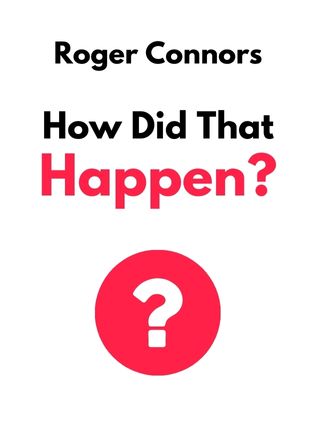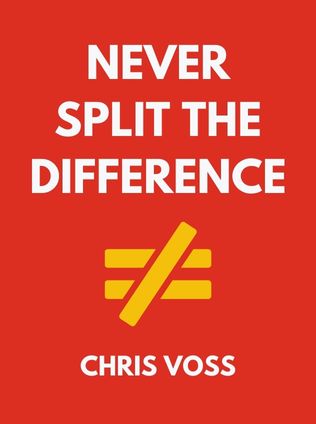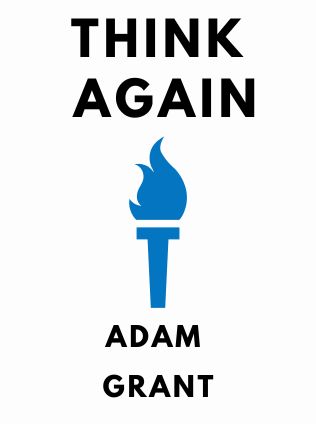
How Did That Happen?
Holding People Accountable for Results the Positive, Principled Way
By Roger Connors,
Published 08/2009
About the Author
Roger Connors and Tom Smith are the co-founders of Partners In Leadership®, a globally recognized leadership training and management consulting company. They have dedicated more than two decades to studying and teaching the principles of accountability, believing that it is the cornerstone of individual and organizational success. Connors and Smith are also the authors of The Oz Principle: Getting Results Through Individual and Organizational Accountability and Journey to the Emerald City: Achieve a Competitive Edge by Creating a Culture of Accountability.
Main Idea
The central theme of How Did That Happen? Holding People Accountable for Results the Positive, Principled Way revolves around the concept of accountability. Connors and Smith provide a framework for holding people accountable in a manner that is both positive and principled. Their approach, known as the Accountability Sequence®, involves forming, communicating, aligning, and inspecting expectations to ensure that results are achieved. The authors emphasize that accountable cultures produce reliable results and that this methodology can prevent the unpleasant surprises that often derail projects.
Table of Contents
- Introduction
- The Outer Ring
- The Three Axioms of the Outer Ring
- The Accountability Connection
- Form Expectations
- Communicate Expectations
- Align Expectations
- Inspect Expectations
- The Inner Ring
- The Reality Window
- Solving Unmet Expectations
- Examine Motivation
- Evaluate Training
- Assess Accountability
- Consider Culture
- Conclusion
Connors and Smith begin by addressing a common question in organizational settings: "What do you hold people accountable for?" They assert that accountability fundamentally revolves around the expectations we have of others, whether it involves timely report submissions, sales targets, product specifications, or delivery timelines. The key to holding others accountable lies in effectively managing these expectations.
The Outer Ring
The Accountability Sequence starts with the Outer Ring, which focuses on forming, communicating, aligning, and inspecting expectations. This part of the sequence empowers individuals to influence results proactively.
The Three Axioms of the Outer Ring
Connors and Smith introduce three foundational axioms for holding others accountable positively and effectively:
- The Accountability Fallacy: This axiom addresses the misconception that failure to follow through is due to personal flaws. Instead of punishing people, it suggests leaders should understand and address the underlying issues.
- The Accountability Assumption: Begin with the assumption that people are doing their best to meet expectations. This mindset fosters a collaborative environment where everyone is committed to success.
- The Accountability Truth: When things go wrong, leaders should first examine their own actions and contributions to the problem. This self-reflective approach enables continuous improvement in holding others accountable.
The Accountability Connection
Building a positive Accountability Connection with each individual is crucial. If someone feels treated unfairly, the connection becomes negative, hindering accountability. Connors and Smith offer seven clues to detect a negative connection, such as visible frustration, preemptive excuses, lack of positive feedback, and avoidance. Recognizing these clues helps leaders manage their relationships more effectively.
Form Expectations
Clear expectations are the foundation of accountability. Connors and Smith emphasize the importance of forming "best" expectations with the input and collaboration of those involved. They introduce the Expectations Chain™, which connects everyone involved in fulfilling an expectation. To form effective expectations, they recommend using the FORM Checklist™:
- Framable: Ensure the expectation aligns with the current vision, strategy, and priorities.
- Obtainable: Confirm that the expectation is achievable given current resources and capacities.
- Repeatable: Make sure the expectation can be clearly communicated through the Expectations Chain.
- Measurable: Track progress and measure the fulfillment of the expectation.
Communicate Expectations
Effective communication is vital in the Accountability Sequence. The Why-What-When® approach provides a framework for communicating expectations:
- Why: Make the reason behind the expectation compelling and personal to the audience.
- What: Clearly articulate the expectation, define boundaries, and establish available support.
- When: Attach concrete deadlines to every key expectation.
By following this approach, leaders can ensure that their team understands the importance, clarity, and timing of expectations, which is essential for alignment.
Align Expectations
Alignment involves achieving Complete Alignment rather than mere Complyment. Complete Alignment occurs when individuals fully commit to fulfilling expectations, whereas Complyment only meets the minimum requirement. The Alignment Dialogue™ helps leaders gauge and improve alignment through three steps:
- Score It: Rate the level of alignment on a scale of 1-10.
- Evaluate It: Determine what is needed for better alignment by asking clarifying questions.
- Resolve It: Address concerns and confirm or revise the expectation using Why-What-When.
Inspect Expectations
The final step in the Outer Ring is to inspect expectations. This involves regularly checking in on progress to ensure alignment and address any issues before they escalate. Connors and Smith advocate for ongoing Alignment Meetings™ rather than a one-time dialogue. These inspections should be seen as opportunities to provide support, coaching, and resources, ensuring that everyone remains on track.
The Inner Ring
Even with the best efforts, unmet expectations can arise. The Inner Ring of the Accountability Sequence provides strategies for managing these situations effectively.
The Reality Window
Accurately diagnosing problems requires a clear sense of reality. The Reality Window™ helps distinguish between Phantom Reality™ (inaccurate perceptions) and the actual Reality. By performing regular Reality Checks, leaders can avoid false assumptions and recalibrate their actions to address real issues.
Solving Unmet Expectations
To address unmet expectations, leaders must choose one of three actions: lower the expectation, replace the person, or engage in an Accountability Conversation to help them meet the expectation. The conversation involves:
Sign up for FREE and get access to 1,400+ books summaries.
You May Also Like
How To Win Friends and Influence People
The All-Time Classic Manual Of People Skills
By Dale CarnegieQuiet: The Power of Introverts
The Power of Introverts in a World That Can't Stop Talking
By Susan CainThe Lean Startup
How Today's Entrepreneurs Use Continuous Innovation to Create Radically Successful Businesses
By Eric RiesWho Moved My Cheese?
An Amazing Way to Deal with Change in Your Work and in Your Life
By Spencer Johnson, M.D.Make Your Bed
Little Things That Can Change Your Life...And Maybe the World
By William H. McRaven



















